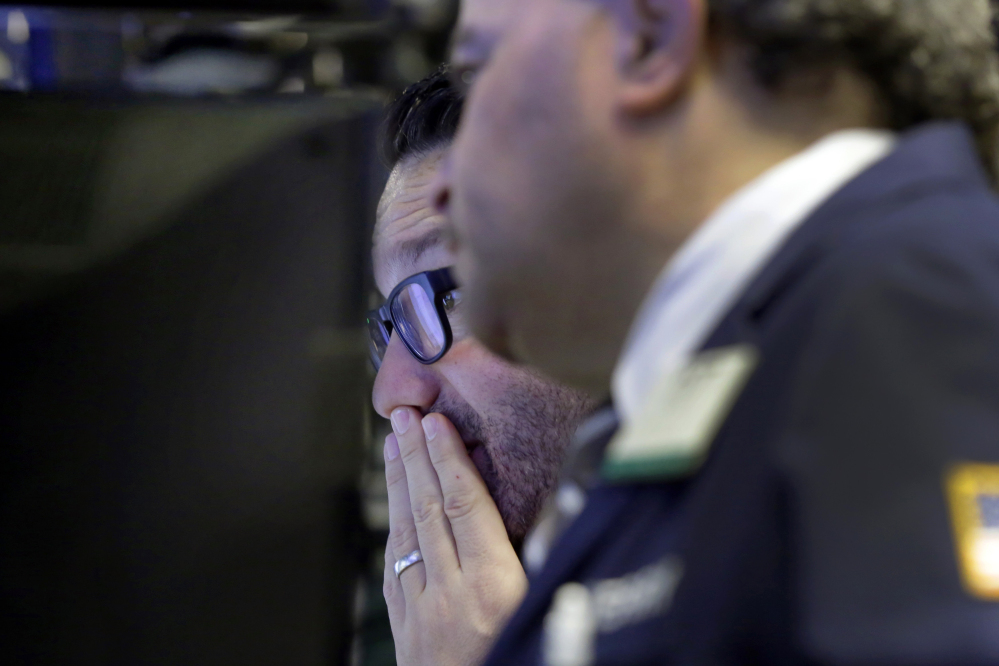WASHINGTON — If it’s true, as economist Paul Samuelson once quipped, that the stock market has predicted nine out of the last five recessions, then let’s hope that this is one of those four fake-outs.
I don’t need to tell anyone who has had been brave – or masochistic – enough to look at their 401k that this has been the worst start to the year in market history. Indeed, the S&P 500 has been down as much as 8 percent since the calendar turned to 2016. But is this just a blip or the beginning of a bust? Yes. The truth is nobody knows. Trying to explain one or two or even 10-day market moves leads only to madness. Sometimes all you can say is that markets go up and markets go down. Anything more is just trying to read the market’s entrails.
That said, here’s what I think those entrails are saying. Like a lot of things, this sell-off has been made in China. It has a stock market bubble that’s bursting, a credit bubble that’s actually still inflating, an economy that has already been slowing down, and a government that doesn’t seem to know what it’s doing anymore. It’s enough that people are trying to move their money out of the country before things get any worse – which, of course, is making things worse. And that, in turn, has gotten stock markets around the world to give us their best Wile E. Coyote impressions – falling once they glance down – now that it looks like China might be cooling off a good bit more than its official numbers are letting on.
But that’s not the whole story. Our markets, after all, have gotten hit pretty hard even though our economy shouldn’t be by China’s slowdown. And besides, to the extent that lower Chinese demand means lower commodity prices, it should actually help us.
No, the real problem is that, independent of what’s going on everywhere else, the U.S. economy might be slowing down too. How is that possible when we’ve been adding an average of 284,000 jobs the past three months? Well, as Andrew Levin, a Dartmouth professor and former adviser to Federal Reserve Chair Janet Yellen, points out, that jobs boom doesn’t look like it will last. Industrial production is falling as fast as it does when there’s historically been a recession, and core retail sales, which strip out cars, gas, and building materials, started declining in December.
A recession, though? That still seems far-fetched. Sure, the strong dollar has hamstrung manufacturing, but, as economist Dean Baker argues, our spate of unseasonably warm weather has made that look worse than it really is. The upshot is that the economy probably won’t grow as fast as before – which was already pretty disappointing – but won’t stop growing at all, either. And if that’s the case, then former International Monetary Fund chief economist Olivier Blanchard is probably right that this mini-crash doesn’t make a lot of sense. People are selling not because they have a reason to, but because they think other people do. It’s panic all the way down.
But, as much as we might want to, that doesn’t mean we can dismiss it. Markets might overreact, but forecasters do the opposite. Of the last 220 recessions in rich countries, the IMF has, as economist Larry Summers points out, predicted exactly zero a year in advance. What does that mean, then? Not that markets think there will be a recession, but that the recovery is still so fragile that there could be one. All it would take is for the rest of the world to make things a little worse, and for the Federal Reserve to make a mistake. In fact, it already might have. It just raised rates from zero even though inflation is nowhere near its 2 percent target and isn’t getting much closer. That, as former Minneapolis Fed president Narayana Kocherlakota has observed, has made markets think that inflation will only average 1.6 percent between 2021 and 2026. And that’s assuming, as markets do, that the Fed only raises rates one time this year, and not the four it says it will.
Send questions/comments to the editors.



Success. Please wait for the page to reload. If the page does not reload within 5 seconds, please refresh the page.
Enter your email and password to access comments.
Hi, to comment on stories you must . This profile is in addition to your subscription and website login.
Already have a commenting profile? .
Invalid username/password.
Please check your email to confirm and complete your registration.
Only subscribers are eligible to post comments. Please subscribe or login first for digital access. Here’s why.
Use the form below to reset your password. When you've submitted your account email, we will send an email with a reset code.